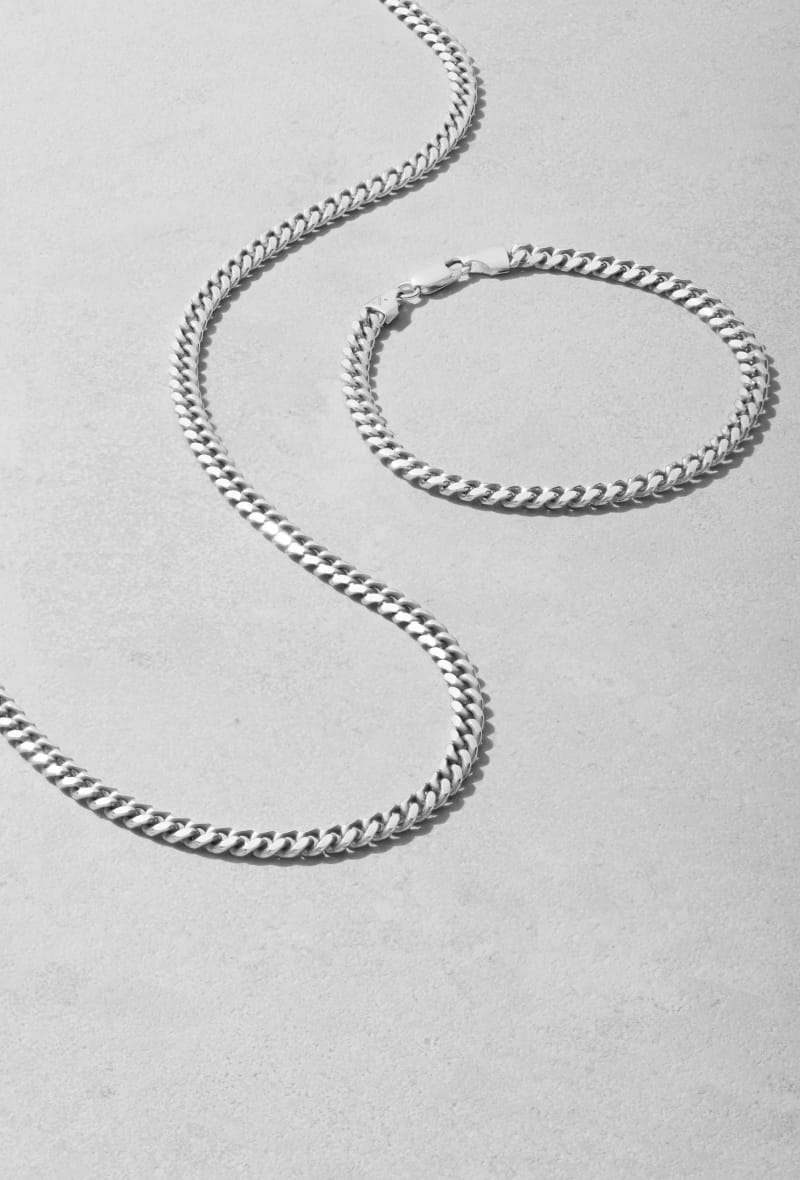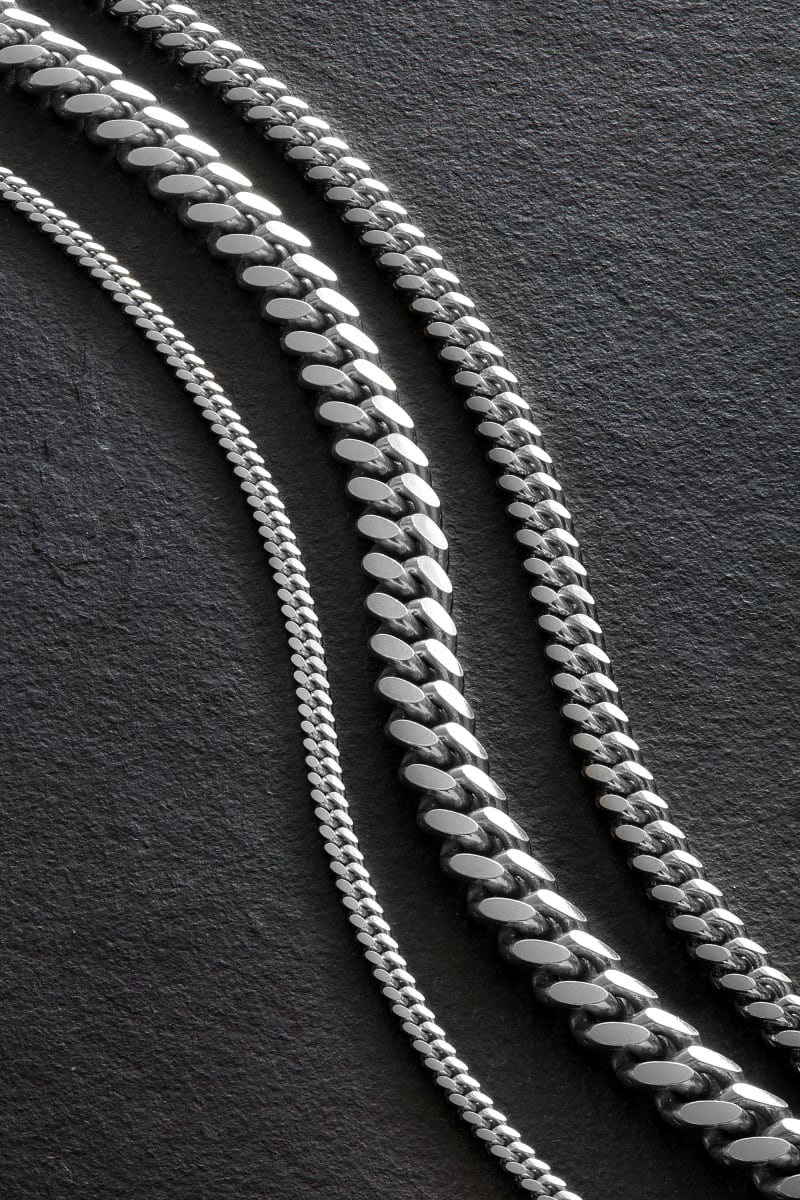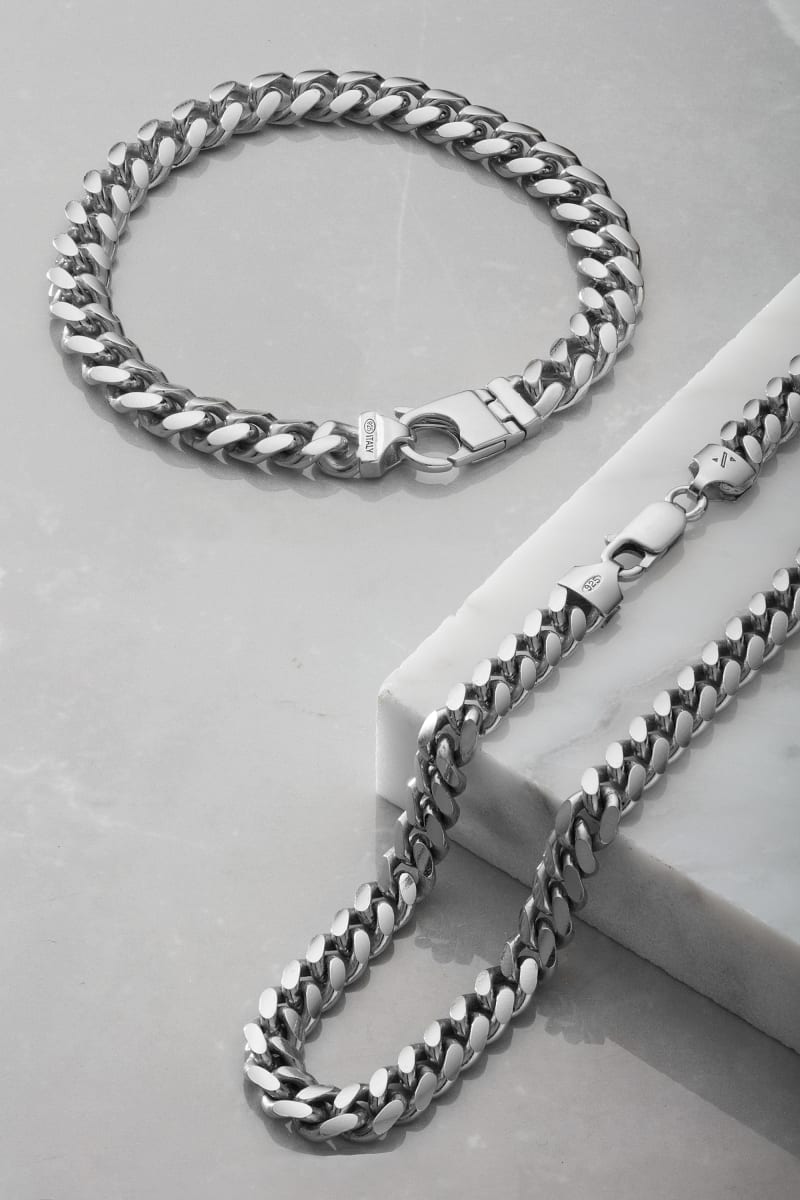From the first discovery from the ancient civilizations of Anatolia (modern-day Turkey), to the Comstock Lode of Nevada in 1859, to the contemporary use of sterling silver in the fashion world, silver has no doubt been a valued metal for millennia.
As with all precious metals, you probably want to know how it holds up over time. A lot of people ask, “Does real silver rust?” The simple answer is, no! But don’t get overexcited; silver can tarnish. So what’s the difference between rust and tarnish? We’ll explain this and let you know how to prevent it from happening to your silver jewelry and clean it if it becomes tarnished.
Rust vs Tarnish
Most people know what rust looks like. It’s a reddish color that ends up in flakes on metal objects like your bike or steel pipe. While rust is a great color for the fall, it’s not so great for fine jewelry.
Rust
Rust is a type of deterioration of metal that eats away at the material through a chemical process that cannot be reversed. Restoration is possible, but the original metal is long gone. Not only is rust unsightly and destructive, but it also creates cracks and sharp edges in the metal, which are dangerous to deal with, so always protect yourself when handling rusty metal. Oxygen and moisture are the culprits of rust, and it tends to impact certain types of metal more than others. As we’ll discuss further, real silver is generally safe from rust and its hazards.
Tarnish
Far less destructive than rust is tarnish, which occurs much more slowly and can be more effectively mitigated through cleaning and care. Silver tarnish occurs without exposure to moisture or other atmospheric elements. Oxygen alone causes a tarnish to happen over time, and only certain metals are vulnerable. Thankfully, tarnish can also be wiped away with the proper cleaning protocols, restoring your silver to perfection.
A familiar type of tarnish is known as patina, which shows up as a blue-green layer on top of bronze. Patina is sometimes appreciated in older pieces of jewelry and antique items, adding to the mythology and mystique of a piece. You may hear the terms tarnish and patina used interchangeably, but remember that the color and materials are the factors that make a difference here.
How Does Silver Tarnish?
So since we now know that silver does not rust, we can explain how silver can become tarnished. This is the best-case scenario for a metal since rust is really the only condition that results in irreversible damage while posing a threat to those who handle it.
Specifically, silver reacts to a mixture of hydrogen sulfide and oxygen in the air, so your experience with silver tarnishing may vary depending on where you are in the world. Don’t worry, because this is a natural part of owning and enjoying silver jewelry, and there are plenty of ways to store and care for your fine jewelry to slow this process.
Quality Silver Tarnishes Slowly
You can follow all the rules and give your silver all the TLC in the world, but if it’s a low-quality alloy, silver tarnishing is going to happen more rapidly and severely every time.The answer to this dilemma is to avoid lower-tier silver jewelry and opt for authentic sterling silver pieces instead. Sterling silver is 92.5% pure silver, with 7.5% alloy metals like copper for strength and support. The result is a collection of silver jewelry that tarnishes minimally and responds much better to proper cleaning and maintenance protocols. Ask any jewelry pro—the longevity and assurance are definitely worth the slight price increase for sterling silver.
If the idea of rusty jewelry now terrifies you, sterling silver is the best choice. You may have to contend with some tarnish and buildup here and there, but that’s a small price to pay to keep the rust away!
How to Clean Silver Jewelry
Remember how we said silver tarnish was normal? Well, cleaning silver jewelry should be a simple solution. With easy-to-use cleaning kits and storing your jewelry properly in a case or drawer, you can keep your silver chain or bracelet looking good forever.
Here are some things you should keep away from your sterling silver jewelry:
- Harsh chemicals: do not spray colognes or perfumes directly on your chain. Lotions and body washes can also damage the silver, so we recommend keeping those away from your jewelry.
- While you can wear our JAXXON chains in the pool and ocean, you’ll want to clean them off after. We all know every pool has different amounts of chlorine, and the more chlorine, the harsher it is on your custom pendant. The same goes for salt water!
Sterling Silver Jewelry
Shop around for sterling silver, and you’ll likely encounter the “925” stamp, or at least hear some mention of the term. This is the distinguishing feature of sterling silver, and it indicates that 92.5% of the piece is pure silver, which is the standard of all sterling silver. That remaining 7.5% is a bit more of a grey area. Alloys can be made from materials like zinc, or palladium. Depending on the quality of the alloy, you can expect to spend different prices on your sterling silver jewelry.
Don’t know what sterling silver is? Sterling silver is a beautiful metal if you don’t want to wear gold or like to style them differently. It’s also a great alternative to white gold. We coat our fine silver chains and bracelets in rhodium for additional shine, so you can always stand out. We love the way silver stands out when wearing a sharp Franco Chain or a classic Cuban Chain.
Now, you can rest assured that your fine silver jewelry won’t rust, and if it tarnishes, you can easily fix it. If you need help finding the perfect silver item or taking care of your silver jewelry, we are here to help.




